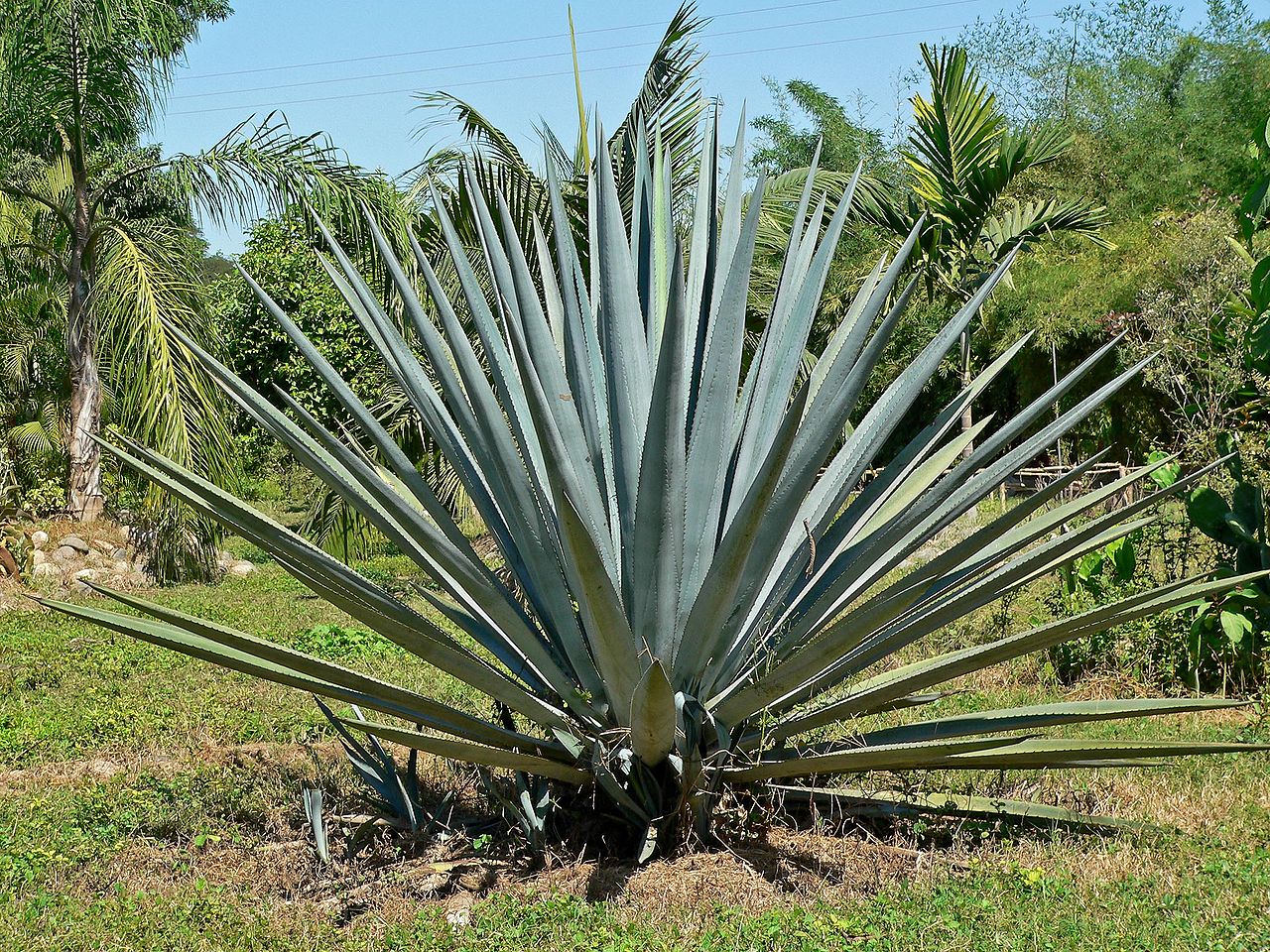
The agave They are one of the most popular plants in gardens with little irrigation: there are many species, and all of them, in addition to having a very interesting ornamental value, resist drought without problems. Some are a little "dangerous" to humans when armed with thorns, but there are others that are completely harmless.
As if that were not enough, in their places of origin they found uses that have nothing to do with decoration. So If you want to know everything about them, you are in the right place.
Origin and characteristics of the agave
Our protagonist is a genus of succulent plants native to the arid region between the southern United States and northern Mexico. Today it is made up of about 300 species, known as pita, maguey, cabuya, or mezcal, among other common names.
They are characterized by develop thick, fleshy basal rosette-shaped leaves, greenish, bluish-green, gray-green, or variegated. In many cases their margins are armed with thorns, although there are some species that do not lack them.
They bloom only once in their life, which is why they are said to be monocarpic plants. After flowering, which occurs when they produce a flower stalk higher than the rosette of leaves, they develop numerous basal suckers and finally die, leaving only the next generation alive.
Main species
The best known are the following:
American agave

Image - Wikimedia / Geertivp
It is known as yellow agave or pita, and it is a species that develops a rosette of large leaves 1 to 2m long by 15-25cm wide, spiny, and with a height of about 40-50cm.
Uses
The sap extracted from the flower stem is used to produce an alcoholic beverage called mezcal, and in Central America it is used as a natural remedy for diarrhea, constipation, jaundice, and indigestion.
It is also used as an ornamental plant, but in countries like Spain its trade, possession, trafficking, as well as its introduction to the environment is prohibited. You have more information about it here.
Agave attenuata

Known as attenuated agave, dragon agave or swan neck, is an autochthonous species of Mexico. Forms a rosette of thornless leaves up to 70cm long by 12-16cm wide, light green in color.
Uses
It is used as an ornamental plant.
Tequilana agave

Image - Wikimedia / Stan Shebs
Known as blue agave or tequila agave, is a species that reaches a height of about 60-70cm. It forms a rosette of bluish, pointed leaves.
Uses
Its use for making tequila is known, but it is also interesting as an ornamental plant.
What care do agaves need?
If you want to have a copy, we recommend providing the following care.
Location
They are plants that they must be abroad, in an area where sunlight gives them direct sunlight, if possible throughout the day.
Only him Agave attenuata it might need some protection against the king star if it was bought from a nursery where it was in semi-shade.
Earth
- Garden: they grow in arid soils, with very good drainage. In case yours is not like that, make a planting hole of about 40 x 40cm, and fill it with small-grained volcanic soil (1-3mm thick).
- Flower pot: the pot must have holes in its base, and be filled with volcanic earth, such as pomx or akadama. Another option is to mix black peat with perlite in equal parts, but it is not the most advisable.
Irrigation
The agave or maguey are plants that they need little water. In pots, you do have to water them once or twice a week in summer, but the rest of the year with a watering every 10-15 days they have more than enough.
In the case that they are in the garden, they only need to be watered from time to time, allowing the soil to dry completely before watering again.
Planting or transplanting time

Whether you want to change the pot or plant in the garden, you have to do it in spring, when the minimum temperature is equal to or greater than 15 degrees Celsius.
Plagues and diseases
En general, they are very resistant. They do not usually have problems with insects or microorganisms that cause diseases. Now, it is advisable to keep them protected from snails, so that during the rainy season do not hesitate to protect your agave with mosquito netting, or with diatomaceous earth.
Rusticity
It depends on the species, but most resist cold and frost down to -4ºC. Bill A. attenuata it is more delicate: it holds up to -2ºC and still suffers a little.
Uses of the maguey
They have several:
Ornamental
They look great in a garden, especially planted in groups. In large pots they are also beautiful, and good to care for.
Culinary
The sap is extracted from some species of agave, which is then used to make tequila or agave syrup.
What is agave syrup?
Known as agave syrup or honey, agave syrup it is a drink rich in sugars and proteins which, apart from being taken as such, is also used in the preparation of breads and other recipes typical of the Mexican Highlands.
What do you think of these plants?